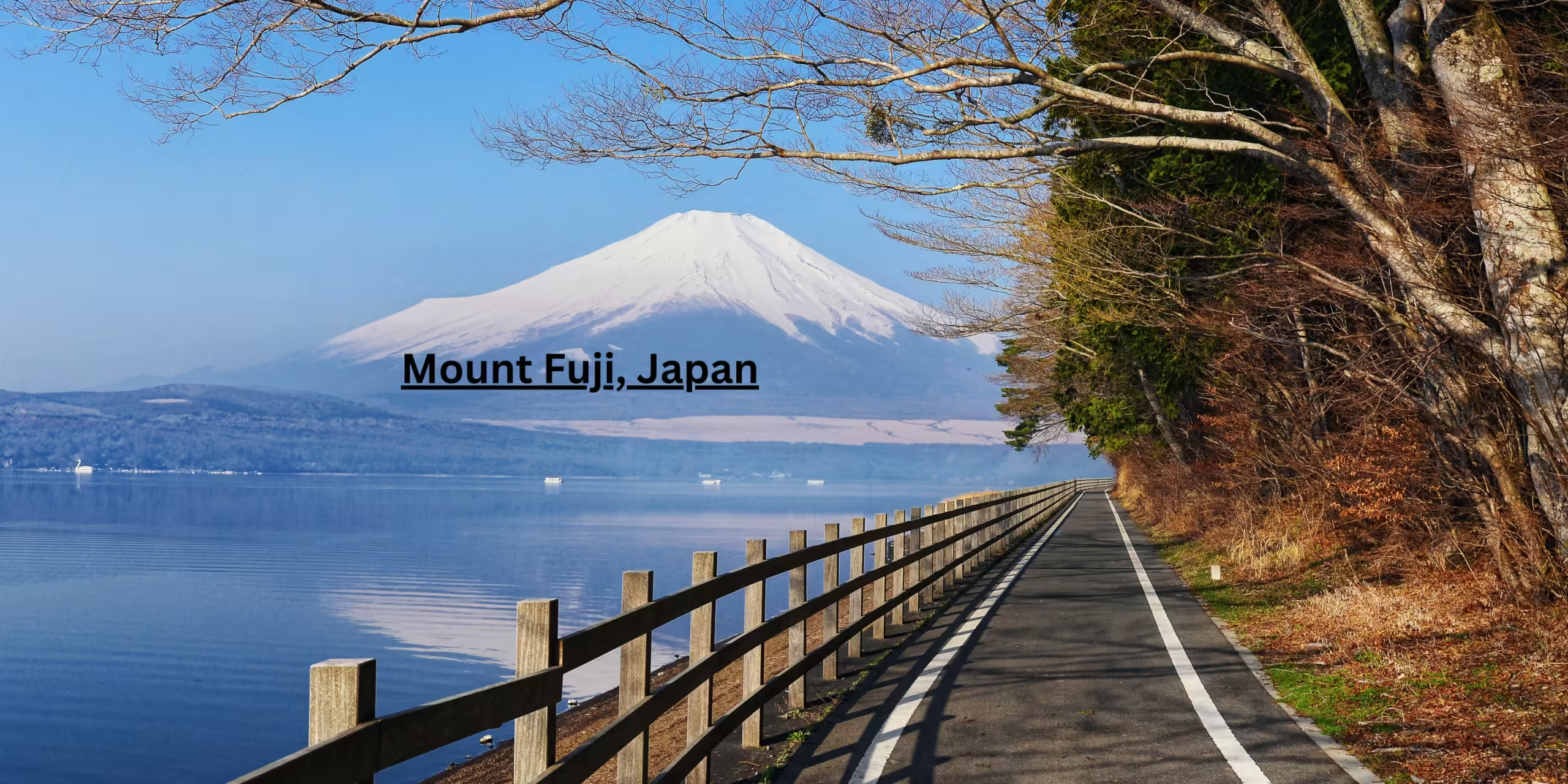
Discovering the Majesty of Mount Fuji: Japan’s Iconic Peak
Mount Fuji, an awe-inspiring symbol of Japan, stands majestically at 3,776 meters (12,389 feet), making it the country’s tallest mountain. Its symmetrical cone, often capped with snow, has inspired artists, poets, and travelers for centuries. Located on Honshu Island, just 100 kilometers southwest of Tokyo, Mount Fuji is more than just a natural wonder—it’s a cultural and spiritual icon deeply embedded in Japanese heritage.

Why Visit Mount Fuji?
Mount Fuji offers a blend of natural beauty, cultural significance, and outdoor adventure, making it a must-visit destination for any traveler to Japan. Here’s why:
- Breathtaking Scenery: Whether viewed from afar or up close, Mount Fuji provides stunning vistas that change with the seasons. Cherry blossoms in spring, lush greenery in summer, fiery foliage in autumn, and snow-capped peaks in winter offer year-round visual delight.
- Cultural Significance: Mount Fuji is one of Japan’s Three Holy Mountains, along with Mount Tate and Mount Haku. It has been a pilgrimage site for centuries and features in countless works of art, literature, and folklore.
- Outdoor Activities: From hiking to scenic tours, Mount Fuji offers a variety of activities for nature enthusiasts and adventurers. The climbing season, from early July to mid-September, attracts thousands of climbers aiming to reach its summit and witness a sunrise from above the clouds.
Best Time to Visit
The optimal time to visit Mount Fuji depends on what you wish to experience:
- Climbing Season: Early July to mid-September is the official climbing season. The weather is milder, mountain huts are open, and the trails are relatively safe. This is the best time for those wanting to reach the summit.
- Off-Season: Visiting during spring (April to June) or autumn (September to November) offers beautiful landscapes and fewer crowds. However, the summit trails are closed, so you won’t be able to climb to the top.
- Winter: While the snow-covered peak is stunning, climbing is extremely dangerous and not recommended. However, the surrounding areas offer excellent skiing and snowboarding opportunities.
Climbing Mount Fuji
Climbing Mount Fuji is a unique and rewarding experience. Here are some key points to consider:
- Routes: There are four main trails to the summit—Yoshida, Subashiri, Gotemba, and Fujinomiya. The Yoshida Trail is the most popular, with many facilities and mountain huts along the way.
- Preparation: Proper preparation is crucial. Wear sturdy hiking boots, dress in layers, and bring essentials like water, snacks, a flashlight, and a first aid kit. Acclimatize to the altitude to avoid altitude sickness.
- Mountain Huts: These provide rest, meals, and overnight stays. Booking in advance is recommended, especially during peak season.
- Sunrise Viewing (Goraiko): Many climbers aim to reach the summit for sunrise, a phenomenon known as Goraiko. It’s a magical experience as the first light of day illuminates the landscape below.
Surrounding Attractions
Even if you’re not climbing, the region around Mount Fuji has plenty to offer:
- Fuji Five Lakes: Located at the northern base, these lakes—Kawaguchiko, Saiko, Yamanakako, Shojiko, and Motosuko—offer stunning views of the mountain, boating, fishing, and hot springs.
- Chureito Pagoda: This five-story pagoda is a popular photo spot, especially during cherry blossom season.
- Fujisan Sengen Shrine: Located at the mountain’s base, this historic shrine is dedicated to the goddess of Mount Fuji and is a starting point for many climbers.
Tips for Travelers
- Transportation: From Tokyo, you can reach Mount Fuji via direct buses to the Fifth Station or take a train to Kawaguchiko Station and transfer to local buses.
- Accommodation: Options range from traditional ryokans to modern hotels. Staying in the nearby towns of Fujiyoshida or Kawaguchiko provides easy access to the mountain and surrounding attractions.
- Respect Nature: Mount Fuji is a UNESCO World Heritage Site. Respect the environment by not littering and following trail guidelines.
Conclusion
Mount Fuji Japan is a destination that captivates the hearts of all who visit. Whether you’re scaling its heights or admiring it from a distance, the mountain’s beauty, cultural richness, and the sense of tranquility it imparts make it an unforgettable experience. Plan your trip to Mount Fuji and immerse yourself in one of Japan’s most treasured natural wonders.
Feel free to visit our blog at onevdo.com for more travel tips and inspiring destinations.


